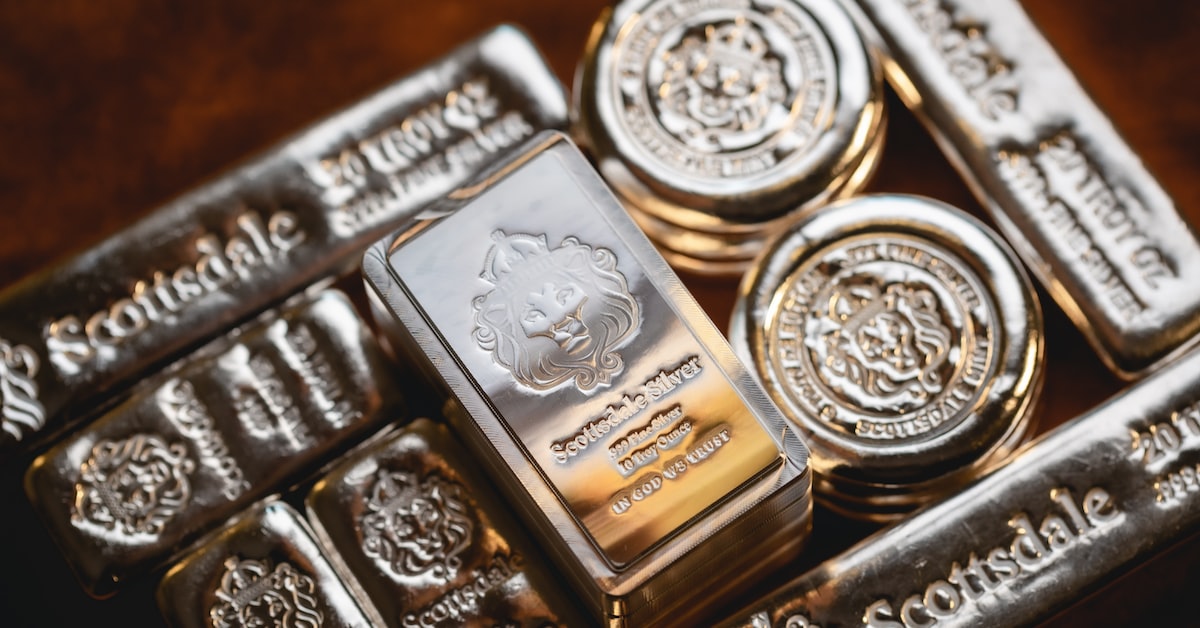Investing in Silver: A Precious Metal with Industrial and Monetary Value
Silver, often referred to as the “poor man’s gold,” has been cherished for centuries for its beauty and value. This precious metal has a rich history and offers a unique investment opportunity for individuals seeking to diversify their portfolios. In this article, we will explore the reasons why investing in silver can be a lucrative venture, considering both its industrial and monetary value.
Table of Contents
- Introduction
- The Historical Significance of Silver
- Silver’s Industrial Uses
- Silver as a Monetary Asset
- The Silver Market and Price Factors
- Investing in Physical Silver
- Silver Exchange-Traded Funds (ETFs)
- Silver Mining Stocks
- Silver Futures and Options
- Tax Considerations for Silver Investments
- Risks and Challenges of Investing in Silver
- Strategies for Successful Silver Investing
- Conclusion
- FAQs
1. Introduction
Silver has captivated humanity since ancient times, valued for its lustrous appearance and diverse applications. Today, it remains a sought-after precious metal that offers both industrial and monetary benefits to investors.
2. The Historical Significance of Silver
Throughout history, silver has played a significant role in trade, currency, and ornamentation. Ancient civilizations such as the Egyptians, Greeks, and Romans recognized its value and used it as a medium of exchange. Silver coins were prevalent in various economies, establishing silver’s importance as a form of money.
3. Silver’s Industrial Uses
Beyond its monetary significance, silver possesses exceptional industrial properties. Its excellent electrical conductivity and thermal conductivity make it indispensable in the production of electronics, solar panels, batteries, and medical equipment. Moreover, silver’s antibacterial properties have led to its inclusion in healthcare and water purification systems.
4. Silver as a Monetary Asset
Silver continues to serve as a store of value and a hedge against inflation. In times of economic uncertainty, investors often turn to precious metals like silver as a safe haven. Its relatively low price compared to gold makes it more accessible to a wider range of investors.
5. The Silver Market and Price Factors
The silver market is influenced by various factors, including supply and demand dynamics, industrial consumption, macroeconomic conditions, and investor sentiment. Understanding these factors is crucial for making informed investment decisions and capitalizing on market trends.
6. Investing in Physical Silver
One popular way to invest in silver is by acquiring physical silver in the form of bullion bars, coins, or rounds. Owning physical silver provides tangible value and can serve as a long-term investment or a hedge against inflation. Storage and security considerations should be taken into account when investing in physical silver.
7. Silver Exchange-Traded Funds (ETFs)
Investors looking for convenience and liquidity may opt for silver exchange-traded funds (ETFs). These investment vehicles offer exposure to silver prices without the need for physical ownership. Silver ETFs can be bought and sold on stock exchanges, providing flexibility and ease of trading.
8. Silver Mining Stocks
Investing in silver mining stocks allows individuals to gain exposure to the silver industry’s potential growth. Mining companies involved in silver exploration and production may experience significant gains when silver prices rise. However, it’s essential to conduct thorough research and assess the financial health and prospects of mining companies before investing.
9. Silver Futures and Options
For those interested in active trading and speculation, silver futures and options provide opportunities for leveraging price movements. These derivative instruments enable investors to speculate on future silver prices without owning the underlying asset. Engaging in futures and options trading requires careful risk management and knowledge of market dynamics.
10. Tax Considerations for Silver Investments
Investors should be aware of the tax implications associated with silver investments. Tax laws may vary depending on the jurisdiction and the type of investment instrument. It is advisable to consult with a tax professional to understand the tax treatment of silver investments and any applicable reporting requirements.
11. Risks and Challenges of Investing in Silver
Like any investment, silver carries risks that investors should consider. Price volatility, market manipulation, geopolitical factors, and changes in industrial demand can impact silver prices. It’s crucial to assess personal risk tolerance, diversify investments, and stay informed about market developments to mitigate potential risks.
12. Strategies for Successful Silver Investing
To maximize the potential of silver investments, investors can employ various strategies. Dollar-cost averaging, diversification, setting clear investment goals, and staying informed about market trends are some key principles to consider. Regularly reviewing and adjusting investment strategies can help navigate changing market conditions.
13. Conclusion
Investing in silver provides a unique opportunity to diversify investment portfolios and benefit from its industrial and monetary value. With a rich history, industrial demand, and its role as a store of value, silver has the potential to offer attractive returns for long-term investors. However, it’s crucial to conduct thorough research, assess risks, and choose suitable investment strategies to make informed decisions.
14. FAQs
Q1: Is investing in silver a good idea? Investing in silver can be a good idea for diversifying your portfolio and hedging against inflation. However, it’s important to consider your financial goals, risk tolerance, and conduct thorough research before making any investment decisions.
Q2: How can I invest in physical silver? You can invest in physical silver by purchasing bullion bars, coins, or rounds from reputable dealers. Ensure secure storage and consider factors like authenticity and purity when acquiring physical silver.
Q3: Are there any tax implications for investing in silver? Yes, tax implications may apply to silver investments. Tax laws vary by jurisdiction and the type of investment. Consult with a tax professional to understand the tax treatment and any reporting requirements for your specific situation.
Q4: What are the risks associated with silver investments? Silver investments carry risks, including price volatility, market manipulation, geopolitical factors, and changes in industrial demand. It’s important to assess your risk tolerance and stay informed about market developments to mitigate potential risks.
Q5: Can silver prices go up in the future? Silver prices are influenced by various factors and can fluctuate. While past performance is not indicative of future results, silver’s historical significance, industrial demand, and its role as a monetary asset suggest the potential for price appreciation in the long run.



